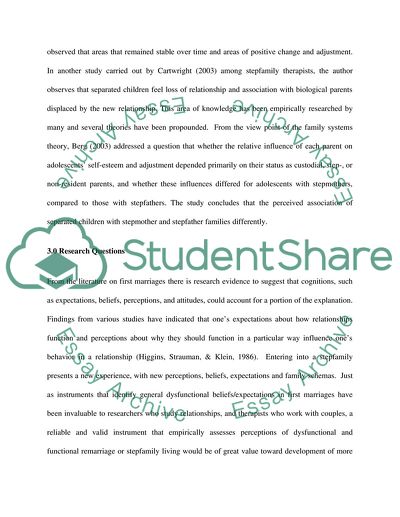Cite this document
(Adjustment Perceptions to Stepfamily Living Research Proposal Example | Topics and Well Written Essays - 1500 words, n.d.)
Adjustment Perceptions to Stepfamily Living Research Proposal Example | Topics and Well Written Essays - 1500 words. https://studentshare.org/family-consumer-science/1554202-a-research-proposal-for-a-small-scale-qualitative-research-project-on-a-topic-of-investigaton-of-the-student-own-choice
Adjustment Perceptions to Stepfamily Living Research Proposal Example | Topics and Well Written Essays - 1500 words. https://studentshare.org/family-consumer-science/1554202-a-research-proposal-for-a-small-scale-qualitative-research-project-on-a-topic-of-investigaton-of-the-student-own-choice
(Adjustment Perceptions to Stepfamily Living Research Proposal Example | Topics and Well Written Essays - 1500 Words)
Adjustment Perceptions to Stepfamily Living Research Proposal Example | Topics and Well Written Essays - 1500 Words. https://studentshare.org/family-consumer-science/1554202-a-research-proposal-for-a-small-scale-qualitative-research-project-on-a-topic-of-investigaton-of-the-student-own-choice.
Adjustment Perceptions to Stepfamily Living Research Proposal Example | Topics and Well Written Essays - 1500 Words. https://studentshare.org/family-consumer-science/1554202-a-research-proposal-for-a-small-scale-qualitative-research-project-on-a-topic-of-investigaton-of-the-student-own-choice.
“Adjustment Perceptions to Stepfamily Living Research Proposal Example | Topics and Well Written Essays - 1500 Words”. https://studentshare.org/family-consumer-science/1554202-a-research-proposal-for-a-small-scale-qualitative-research-project-on-a-topic-of-investigaton-of-the-student-own-choice.


